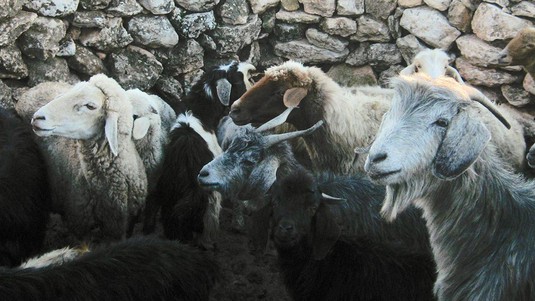How did we domesticate sheep and goats?

© F. Pompanon - Troupeau mixte de chèvres et moutons élevés dans l’Atlas
Sheep and goats share a number of similar genetic targets involved in domestication but exhibit different patterns of selection to achieve similar characteristics, according to a genomic analysis of their wild relatives, published online this week in Nature Communications. This research was carried out by the Nextgen Consortium, among which scientists of the Laboratory of Geographic Information Systems (LASIG), EPFL.
Researchers at the University Grenoble Alpes, the European Bioinformatics Institute (EMBL-EBI), EPFL and collaborators have found that similar characteristics in sheep and goats can result from different patterns of gene selection. The study, published in Nature Communications, sequenced and analysed for the first time the genomes of the wild Asiatic mouflon and the Bezoar ibex, comparing them to those of domestic sheep and goats.
About 11,000 years ago, humans started coaxing animals into their settlements, gradually breeding them to better suit human needs. Traits such as tameness, rapid growth and stamina have proven especially popular for domestication. One thing that remains unclear to this day is the genetic basis for these different traits. As more domesticated animals have their genomes sequenced, answers start to emerge about how these beasts went from wild animal to tame companion.
For this study, researchers travelled to Iran and Morocco to sequence wild and domestic breeds of sheep and goats. They compared the data with a third domestic group comprising a worldwide panel of breeds used mostly in industrial agriculture.
Nextgen scientists found 20 common genomic regions related to domestication, but the patterns of gene selection significantly varied between sheep and goats. This suggests that different “genetic solutions” have given rise to similar characteristics in sheep and goats. The domestication process was not expected to be so different in species that are so similar. Genome sequencing and improved methods for assembling whole DNA sequences could one day help researchers understand and improve animal breeding.
This project was funded by EC FP7 framework programme, Grant Agreement Number 244356.



